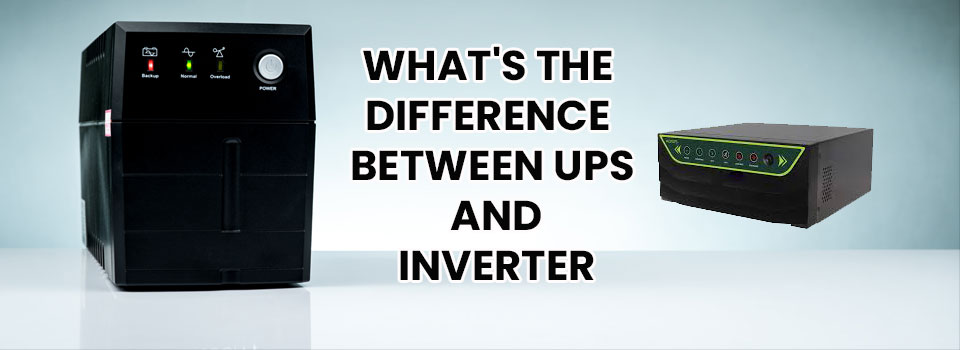What is the main difference between UPS and Inverter?

What’s the Difference Between UPS and Inverter?
Inverters and uninterruptible power supplies (UPS) are both used to deliver electricity. To understand their difference, we need to Understand how a UPS and an inverter function.
What is an inverter and How it works?
An inverter is a device that allows electrical appliances in the house to run continuously.
When considering the differences between an inverter and a UPS, it’s important to remember that such power backup systems require an extra DC (battery) source to store the converted energy. Another thing to remember is that when the electricity is switched on, an inverter helps charge the battery by turning the AC source into DC current. With a high capacity batteries, inveter provide 5 to 10 hours of power backup. It also takes roughly 10-20 ms for inverter relays to transition from mains power to battery power during Mains Power Off.
Even a minor delay of 10-20 milliseconds may cause big financial loss(banking and IT industry) and put life in danger (in Hospitals)
UPS are created for all these situation, it provide Uninterruptible Power Supply without any delay.
What is UPS (Uninterruptible Power Supply) and how it works?
A UPS, like an inverter, is a device that provides power to loads during a power loss. Generally it provides15 to 60 minutes of power backup during a power outage. External batteries are used in UPS. UPS are usually divided into three types as follows:
a) Online UPS
In normal operation, an online UPS gives power to the AC load and employs an inverter to supply AC power during a power outage. In an online UPS, the output power supply is always ON, which means the UPS is always charging the battery and pulling electricity from the battery to power the load. As a result, there is no switching and, as a result, no temporal delay between its sources. In the event of a power outage, even for a moment, there is no disturbance. The UPS stops charging the battery in the event of a power outage but continues to drive a load from the inverter battery.
b) Offline UPS
The switching time of an offline UPS is 6 to 10 milliseconds, which is good for running PCs and other sensitive equipment at home. The battery stops charging when the mains is turned off, and the relay or static switch instantly moves the output line to the inverter side. The inverter begins taking electricity from the battery at the same time, which is subsequently provided to the AC load. It is called as Offline UPS because it does not take electricity from the AC line during normal operation.
c) Line Interactive UPS
Line-interactive UPS characteristics are taken from both online and offline UPS. A line-interactive UPS’s output includes an inverter. While the AC input is OK, the inverter will charge the battery in reverse and switch to battery power if the input fails.
The switching time is less than that of an offline UPS and is usually approximately 5 milliseconds. Filtering and voltage control are provided by internal components. Before switching to battery backup, line-interactive UPS systems provide a broad range of input voltage changes. This method works particularly well in locations where outages are rare, but power fluctuations are prevalent.
The right type of UPS for your business may vary depending on the specific requirements. We at Mukul Metal Works offer a comprehensive range of UPS solutions for businesses across industries. Our team comprises experts in the field who provide affordable and tailored UPS solutions after evaluating your business’s specific requirements. Contact us today and our team will guide you through the process.
Visit Mukul Metal Works for Online UPS on Rent from (2KVA to 1000KVA of EMERSON UPS) So Call for your UPS Rental Query Now.
@ +91-9810644449